Yoriyuki Yamada / Global
The buzz driver
Kajima, one of Japan’s largest engineering firms, built the country’s first concrete dam and nuclear reactor. Now it’s at the forefront again, this time in the field of urban biodiversity. We meet the man who sees the future in the birds and the bees.Name: Yoriyuki Yamada
Employer: Kajima
Job: Head of biodiversity
Yoriyuki Yamada knows what it’s like to face a tough crowd. A decade ago, as a young landscape architect at Japanese construction giant Kajima, he tried to sell others on the idea of rooftop gardens. He told them how the greenery would act as a buffer against the summer heat, reducing energy costs, and would make our cities better places to live in. He talked about countering the heat-island effect, which is caused by buildings and streets in a city trapping heat, and had the data to back it up. “In the end, most companies opted for a low-cost reflective roof coating,” he says. These days Yamada – still with Kajima – is finally winning converts. Why? In a word, bees.
Since May 2009, Yamada has raised tens of thousands of Japanese honey bees in Tokyo and Nagoya. He has shown them off to local schoolchildren, residents and corporate executives. TV stations and newspapers have featured his work and companies, schools and hospitals have come knocking to ask for his advice.
The bees are part of Kajima’s attempt to explore the business of biodiversity conservation. The field is still relatively obscure but it has been getting more attention as companies look for ways to burnish their environmental credentials. Such conservation is also likely to gain steam in Japan because lawmakers passed legislation last fiscal year requiring Japanese cities to start drawing up biodiversity conservation schemes. So far just a few prefectures and cities, including Nagoya – the host of this year’s UN COP10 biodiversity conference – have released action plans.
When Yamada went to study at the University of Pennsylvania in 2002, his profession was moving away from pure design and into the realm of science. The UN had held its first biodiversity conference. Energy companies including BP and Shell were among the early wave of multinationals to commit to biodiversity conservation. By the time Yamada returned from the US in 2004, Kajima wanted him to explore both the science and business of biodiversity as a way of creating healthier cities and also drumming up new business.
Yamada’s team analysed how the green areas of Tokyo and Nagoya fit together in an ecosystem. They studied woodpeckers, bees and crabs, looked at renewable energy technologies and even rented goats from a farm to see whether the animals would eat weeds on empty plots in suburban Tokyo. But the bees gave them the marketing tool they needed.
When Monocle visits, Yamada is on the roof of Kajima’s 12-storey office building in Nagoya, where about 30,000 bees buzz in and out of wooden hives. Decked out in his white bee-protection suit he is pointing at the bare rooftops nearby. “As you can see, they’re not being used for anything,” he says. Yamada has met with building owners and proposed cultivating flowering plants for the bees. Thanks to the publicity, some executives seem positive. Things are a bit easier in Tokyo where the local government requires builders to set aside a sizeable area of any new project for greenery – hence the growing popularity of vertical and rooftop gardens in the city.
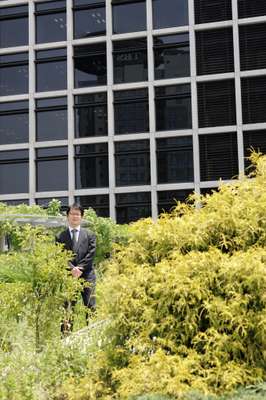

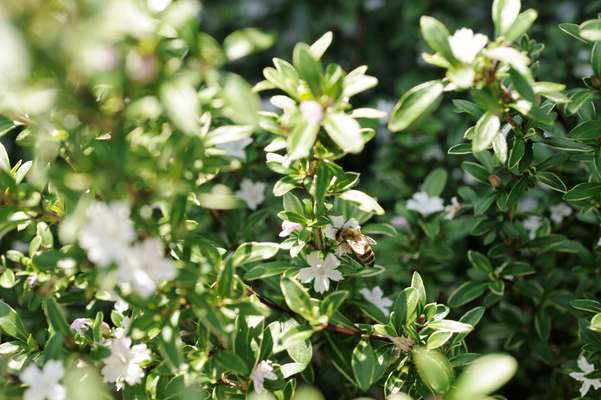
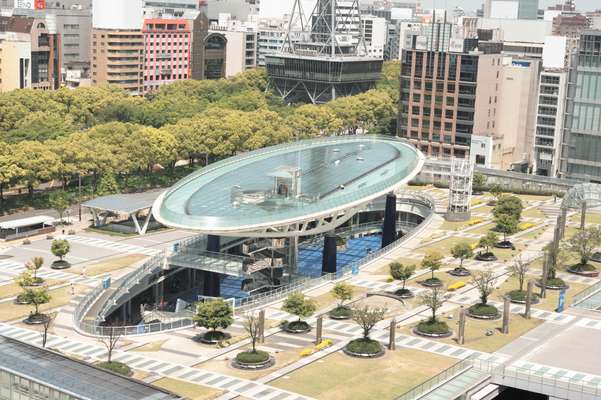
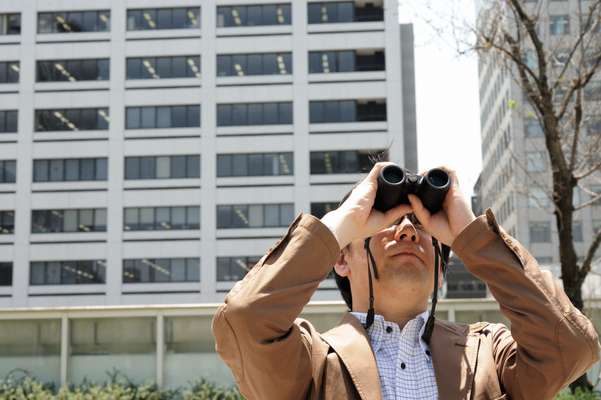



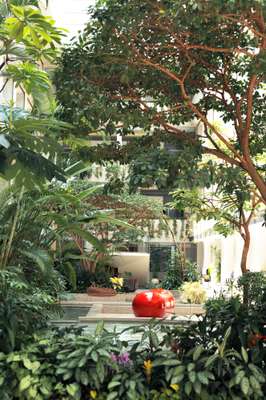
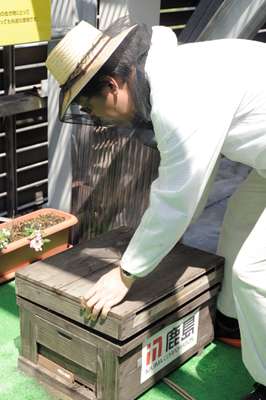

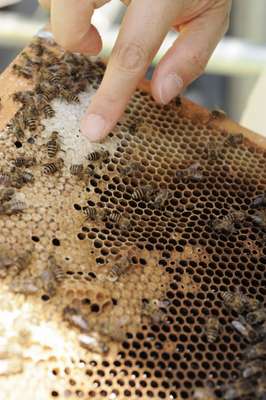
Still, there are limitations. “Many of the biggest companies are on board,” says Toshiharu Ikaga, a Keio University professor who is an expert in the field. “Unfortunately, there are a lot of smaller companies that aren’t.” Despite its proselytising, even Kajima remains cautious. There are only eight people in Yamada’s group and his budget is modest. So he has had to be resourceful. Recently, his team developed an iPhone application with voice-recognition technology that can identify the sounds of 42 bird, two cricket and three frog species. When there’s no match, Yamada hopes users will upload the sounds to a database, along with GPS readings, so the experts can weigh in. “To understand how the green spaces connect, we need to know so much more,” he says.
Monocle: What’s your vision for the city of the future?
Yoriyuki Yamada: We envision a city that can support a variety of animal and plant life. Here, biodiversity conservation is crucial. Once you start thinking about biodiversity you look at the impact a city has on the environment and the natural resources it uses – water, energy, food – over the long term. Our vision also includes renewable energy from solar and wind. That’s not just important for Japan. More than half of the world’s population resides in cities but cities account for 80 per cent of all energy used globally.
M: What kinds of biodiversity conservation projects do you think would work in Tokyo?
YY: Most people think about biodiversity when a species is endangered – the Japanese crested ibis, for instance. It’s more than that. In our proposal for a biodiversity town we show rooftops covered with rice paddies, a vegetable patch and a bee farm. There’s a park for woodpeckers and schools where goats trim the grass.
M: Is this realistic?
YY: With rooftop rice paddies, property developer Mori Building and sake brewer Hakutsuru have demonstrated that it’s possible. Water in the paddy field might help to combat the heat-island effect. You can harvest the rice. And as more people who work in the building pitch in, the rooftop helps to facilitate communication. That’s different from just planting trees and pretty flowers.
M: How close are you to realising your vision?
YY: We are still at a very early stage. Everyone in Kajima’s Global Environment Office does research in addition to our jobs as designers and engineers. I hope to turn what we do into a social phenomenon. Last year, Japan’s Cabinet Office conducted a survey and found that more than 60 per cent of respondents had never heard of biodiversity.
M: How will you make money from this?
YY: We design biodiversity conservation plans for new and renovated facilities. We also advise companies, like Sony and Idemitsu, when they build new factories. Under Japanese law at least 20 per cent of the land a factory sits on must have greenery. To us, it’s not just a landscaping job. We look for historical documents. There might have been a farm or a feudal lord’s palace. We collect satellite data, look at the pockets of greenery within a 2km radius.
M: How do you persuade clients to invest in biodiversity conservation?
YY: Companies might ask us to keep bugs out of the trees using pesticides. We tell them that if they plant trees that attract the birds, they won’t need to spray. The birds will eat the bugs for free. Clients have to understand the benefits or they won’t spend the money.
M: What kinds of biodiversity projects have you proposed?
YY: For one construction project in Tokyo we are creating a habitat for falcons. Falcons nest in tall buildings but often a falcon lays an egg on a building and it rolls off. Our proposal involves spreading pebbles around a sunken area on the rooftop and trying to make it look like a cliff. Then we wait and hope that a falcon will spot it and build a nest.
M: What about the honeybees?
YY: We want people to understand the role of bees, not be afraid of them. If you plant okra or pumpkin seeds in the city they might sprout flowers but unless you take a cotton swab and pollinate the flowers yourself they won’t produce vegetables. Bees will do this for you. We started raising bees at a company dorm in Tokyo, in May 2009.
M: Which cities have biodiversity plans?
YY: Aichi, Hyogo and Chiba prefectures recently unveiled biodiversity action plans. Since the Diet [national parliament] passed a law last fiscal year that requires all public entities to adopt a plan, most cities have begun working with experts to come up with one. Nagoya already released its plan. Tokyo is slated to finish its plan in 2011.
M: How do Japanese cities compare with other cities around the world?
YY: The UK is the leader in the field. Many cities there have adopted biodiversity action plans. Some US cities have as well. Japanese cities are not far behind and lead other wealthy nations.
M: Does a green city make people happier?
YY: It’s not just happiness. One recent study in Kawasaki showed that green cities tend to be safer. There’s also a perceived health benefit. One example is the “brick theory” that comes from a decade- long study by a hospital in Pennsylvania. Patients who were in the rooms facing trees got better faster and needed less treatment than those who were in rooms facing a brick wall. Until that study we only had qualitative observations.
Sustainable growth
Yoriyuki Yamada CV
1968: 14 November born in Chiba, Japan
1992: Graduates from Chiba University, joins Kajima
2002-04: Attends the University of Pennsylvania for a masters degree in landscape architecture
2008: Becomes head of the biodiversity committee at Kajima’s global environment office, receives Japan Society of Civil Engineers’ environmental award
2009: Launches Kajima’s honeybee project in Tokyo
2010: Unveils Kajima’s vision for a sustainable city, launches its Biodiversity Town website
Kajima
Founded in 1840 by Iwakichi Kajima as a carpentry business, Kajima is one of the largest of Japan’s engineering and construction firms. The€14.5bn-revenue company, based in Tokyo, has more than 8,600 employees working at offices in 20 countries, and designs and builds office towers, bridges, dams, airports and nuclear reactors. In ENR magazine’s annual survey of the world’s 225 top contractors, Kajima ranked 24th in 2009. The company has a track record of firsts in Japan: it built the country’s first western-style building in 1860, first concrete dam in the 1920s and first nuclear reactor in the 1950s. Five years ago, Kajima became the first publicly listed Japanese company to draw up a biodiversity conservation plan. The company later launched a research programme to assess how local ecosystems in cities work.


